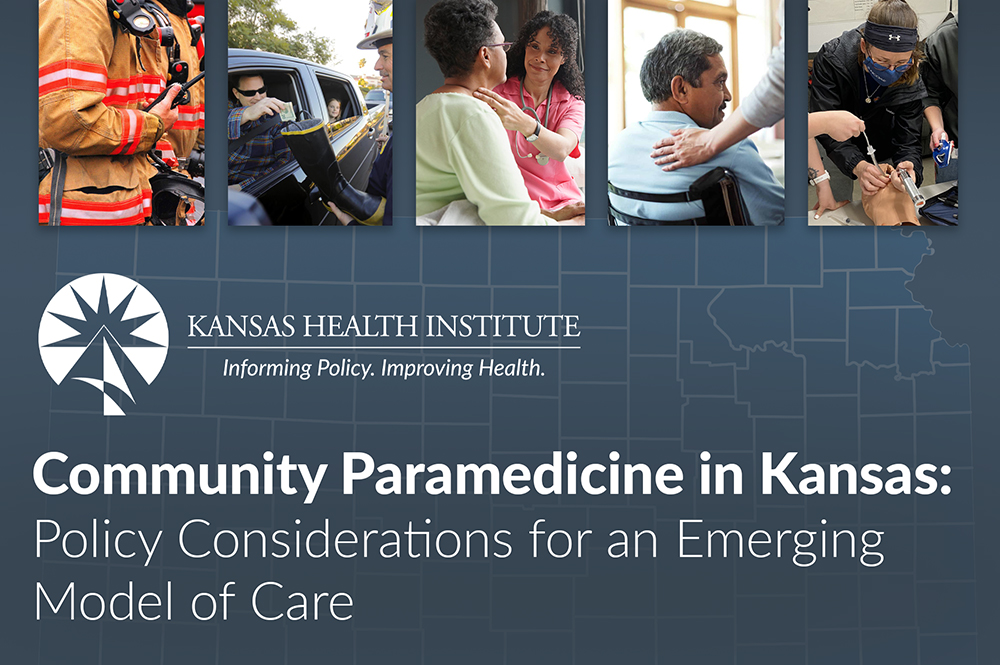
The Kansas Health Institute, in partnership with the Health Fund, recently released the second in a series of research briefs focused on the health care workforce in Kansas. The Community Paramedicine brief explores key policies and practices that influence, support or constrain community paramedicine programs. The first in the series, available here, examined health workforce challenges and opportunities in our state.
Community paramedicine programs represent an emerging model of health care, using the skills, experience and knowledge of emergency medical services professionals — most often paramedics and emergency medical technicians (EMTs) — to deliver a wide variety of non-emergency services in the home. These programs can expand access to care, improve patient outcomes, increase health care system efficiency, and have shown promising effectiveness in both urban and rural settings.
As the health care system continues to demand more skilled workers and an increased capacity of care with fewer resources and supports, the time for innovation and new solutions is now. Community paramedicine shows great potential to help address these challenges, especially in conjunction with other models to expand and strengthen health care teams – including community health workers, peer support specialists, home health aides, nursing assistants, and medical assistants.
Emerging evidence, including from pilot programs in several states, is demonstrating the effectiveness of community paramedicine and highlighting its potential to deliver both improved health outcomes and cost savings. Coordinated with existing health care services, community paramedicine has demonstrated reductions in emergency department visits, readmissions, and costs, while improving patient health outcomes and patient satisfaction.
The research brief was informed in part by a January 30th Kansas Health Institute and Health Fund event, Advancing Community Paramedicine in Kansas, featuring discussion on policy considerations and opportunities related to community paramedics and how they can help meet Kansas’ needs for a stronger and nimbler health care workforce. You can access the event recording and related materials here.
In mid-February, Kansas Health Institute and the Health Fund partnered on a second meeting focused on key policy considerations for leveraging an expanded set of health care professionals to strengthen care teams and address challenges and gaps (including payment issues).
Community Paramedicine Research Brief Highlights
- Community paramedicine programs can expand access to care, improve patient outcomes and increase health care system efficiency and have shown promising effectiveness in both urban and rural settings.
- Community paramedicine utilizes trained emergency medical technicians (EMTs) and paramedics to provide health care services in a variety of non-emergency situations outside of a clinical setting.
- Laws and policies guiding community paramedicine programs build upon existing emergency medical services (EMS) laws and vary from state to state.
- In Kansas, community paramedicine is not explicitly defined or recognized in state policy and current services are provided under the existing EMT and paramedic scopes of practice.
- While most states, including Kansas, do not have reimbursement for community paramedicine services, a growing number are exploring reimbursement and recognition for community paramedicine.
Together, the KHI briefs explore how leveraging the skills and knowledge of health care professionals beyond physicians and nurses can help strengthen health care teams to better address the needs of Kansans.
At the Health Fund, we see great potential for community paramedicine to improve health care access, equity, and outcomes for all Kansans, particularly those in underserved and rural areas of our state.
Read the full Community Paramedicine Brief to learn more.
Back to All News